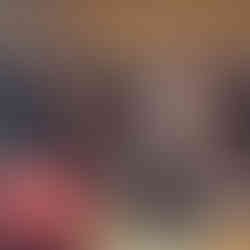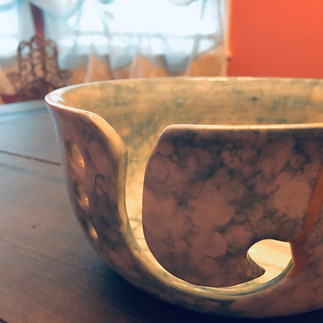What is Art? | Timothy Roe
- Digital Wolf Network

- Jul 2, 2021
- 2 min read
What is Art? | Timothy Roe
Written by Brendan Douglas
Trying to assign Timothy Roe into one or two genres of art is an impossibility, though Tim would say he identifies more as a crafter than an artist. He spent part of his adult life in building trades for a few years when he lived in the Carolinas. He was a carpenter at first, tile mason, flooring, framing, painter, and then spent the latter part of those years in stone masonry. But he has spent most of his life writing poetry and recently finished three books of essays and poems. He enjoys doing various textile crafts from sewing to prayer ropes and other things that seem aesthetically and tactilely interesting. He also plays music and dabbles with writing dime-store songs. The exploration of creativity and knowledge, whether as an artist or a crafter, keeps him driven.
Tim was raised in an environment conducive to free thinking and creating freely from the soul. A passion for knowledge and self-reliance was instilled by his mother. An artist herself and jack of all trades with a highly creative mind, she always had projects for Tim that kept him busy and learning as he grew. She taught him how to use a sewing machine, paint, crochet, and an array of other crafts in which he showed interest. Her teaching method was more inquiry-based than direct instruction. She would show Tim how, but she let him learn through his own process of trial and error to map his own way to personal success without critique or being judged against standards. This way of learning made an impact on his whole way of being.
At some point in time, Tim found himself questioning the definition of art and if it is truly a physical thing at all. In the beginning, art seemed more like a tiresome activity with little reward. But it was through those stages of trial and error and a growing desire to keep going back that he learned to fall in love with the process itself. To Tim, art is a way of posturing towards life. In a certain sense, he is always in his mind planning, thinking about, or in time, doing art.
Tim realized his love of the process closely mirrored the Japanese philosophy that has an idea which Western philosophy has no equivalent, philosophy as engaged knowing. The idea is that creativity is actualized in the process and only learned in the process. By doing we learn more techniques, more ways of expressing and/or approaching projects.
Recently, more Japanese influence would find its way into Tim’s life. After breaking his favorite coffee mug and learning his girlfriend’s mother had broken a piece of pottery she received as a Christmas gift, Tim found a form of repair called Kintsugi while studying Japanese aesthetics that looked beautiful. Kintsugi is the Japanese art of fixing broken pottery. Kintsugi is hard to fully explain, but it is both a worldview (in psychological terms) and an art form. In short, it is fixing broken things to make the piece more beautiful, emphasizing the flaws using gold leaf.
Whether it is making music, creating art from scratch, or making a repair, Tim seems to find a way to express beauty through the process as well as the outcome.










